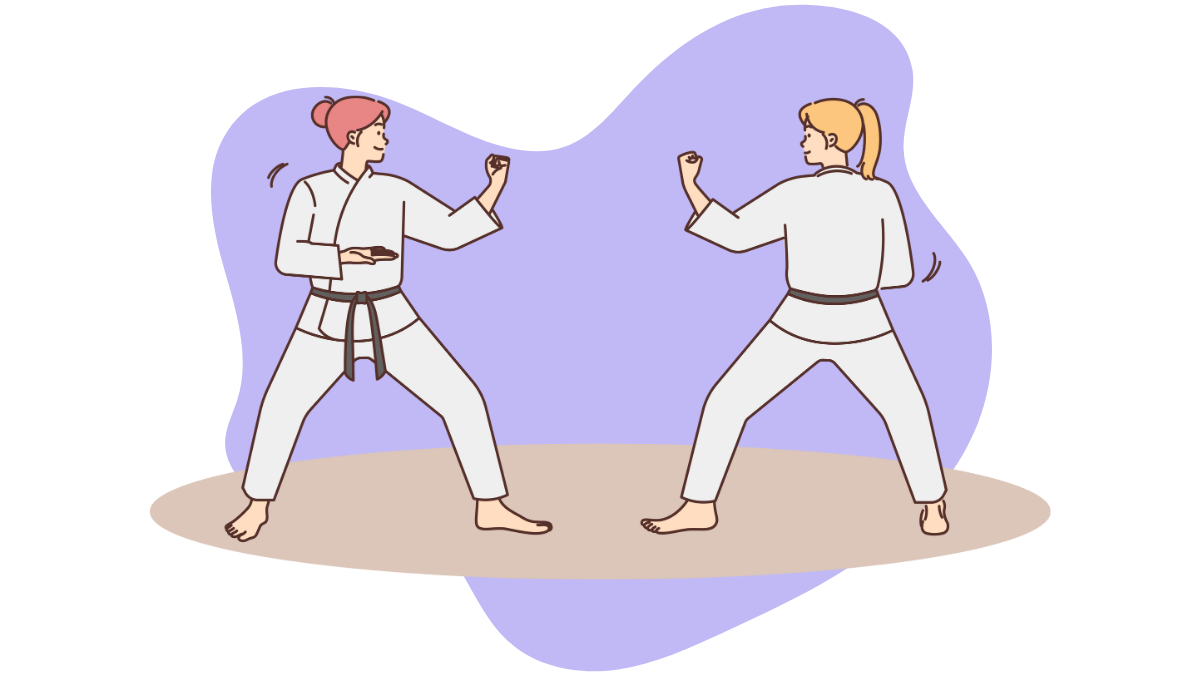Social media platforms provide an excellent opportunity for martial arts studios to connect with martial arts enthusiasts, showcase training experiences, and attract new students. This guide outlines effective strategies to leverage social media for increased visibility, engagement, and student acquisition in the martial arts industry.
Target Audience
Identify the primary audience for martial arts class social media marketing:
- Martial Arts Enthusiasts – Engaging individuals interested in martial arts training, regardless of experience levels.
- Parents & Families – Targeting parents seeking martial arts classes for their children, focusing on discipline and self-defense skills.
- Fitness Enthusiasts – Attracting individuals interested in fitness, self-defense, or alternative workout options.
- Local Communities – Engaging with the local community to build awareness and attract nearby students.
Goals
Define the objectives of utilizing social media for martial arts class marketing:
- Program Promotion & Enrollment – Showcasing class offerings, highlighting training methods, and prompting enrollments or inquiries.
- Brand Differentiation & Training Excellence – Establishing the studio as a leading martial arts educator, showcasing expertise, and conveying training quality.
- Educational Content & Insights – Sharing martial arts-related content, training tips, industry insights, and addressing common inquiries or concerns.
- Community Building & Engagement – Fostering a community around martial arts, initiating discussions, and engaging with followers.
Platforms to Focus On
Identify key social media platforms for martial arts class marketing:
- Instagram – Visual platform showcasing training sessions, techniques, student progress, and engaging visuals related to martial arts.
- Facebook – Utilize business pages, share videos of classes, student achievements, educational content, and engage with local communities.
- YouTube – Host training videos, technique demonstrations, or testimonials to engage potential students and provide supplementary training materials.
- TikTok (Optional) – Create short, engaging videos showcasing martial arts techniques, challenges, or student progress to attract younger audiences.
Content Strategies
Develop content strategies tailored for martial arts class marketing:
- Training Session Videos & Technique Demonstrations – Sharing instructional videos/images showcasing techniques, training sessions, and student progress.
- Educational Content & Training Tips – Creating informative posts/videos explaining martial arts concepts, offering training tips, and industry insights.
- Student Success Stories & Testimonials – Highlighting student achievements, belt promotions, and testimonials to showcase the studio’s impact.
- Behind-the-Scenes & Instructor Spotlights – Offering glimpses into classes, instructor expertise, or special workshops.
Engagement & Conversion Tactics
Implement strategies to engage potential students and convert social media traffic into class enrollments or inquiries:
- Call-to-Action (CTA) – Encouraging followers to join classes, attend workshops, or inquire about programs using clear CTAs.
- Interactive Challenges & Techniques – Hosting challenges, quizzes, or technique showcases with incentives or recognition for participation.
- Live Sessions & Q&A – Hosting live sessions, webinars, or Q&A sessions with instructors to engage and address queries from potential students.
- Community Engagement & Discussions – Encouraging discussions, sharing relevant articles, fostering a community around martial arts topics, and addressing inquiries.
Analytics & Optimization
Utilize analytics to measure and optimize social media performance for student enrollments, engagement, and brand awareness:
- Engagement Metrics – Monitor likes, comments, shares, and engagement across social media platforms.
- Conversion Tracking – Track website visits, program inquiries, enrollments, or workshop registrations from social media referrals.
- Audience Insights – Understand demographics, interests, and engagement patterns for targeted content and ad campaigns.
- Campaign Optimization – Adjust strategies based on performance, analyze successful content, and refine targeting for ads or promotions.
Challenges & Solutions
Address potential challenges in martial arts class social media marketing:
- Training Value & Communication – Effectively communicating the training value, curriculum highlights, and the benefits of martial arts training.
- Competition & Unique Training Proposition – Showcasing unique training methods, specialized workshops, or instructor expertise to stand out.
- Parental Engagement & Trust Building – Engaging parents, addressing concerns, and building trust in the studio’s training quality and safety.
- Student Engagement & Retention – Creating engaging content, offering diverse training programs, and fostering a supportive community to retain students’ interest.
Conclusion
Effectively utilizing social media can significantly enhance visibility, engagement, and enrollments for martial arts studios. This guide provides strategies for engaging enthusiasts, showcasing training experiences, and building a robust online presence in the martial arts education sector.



